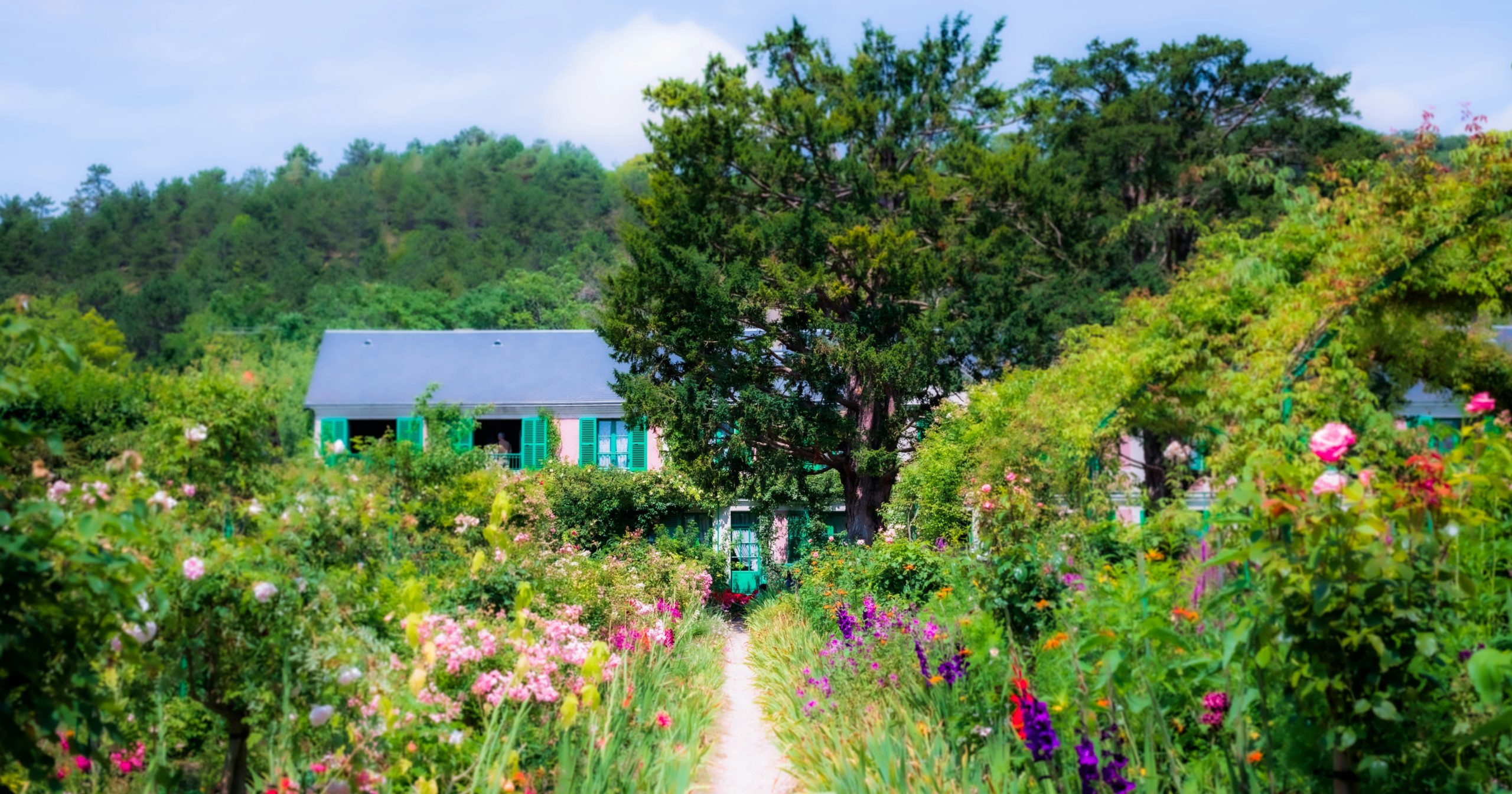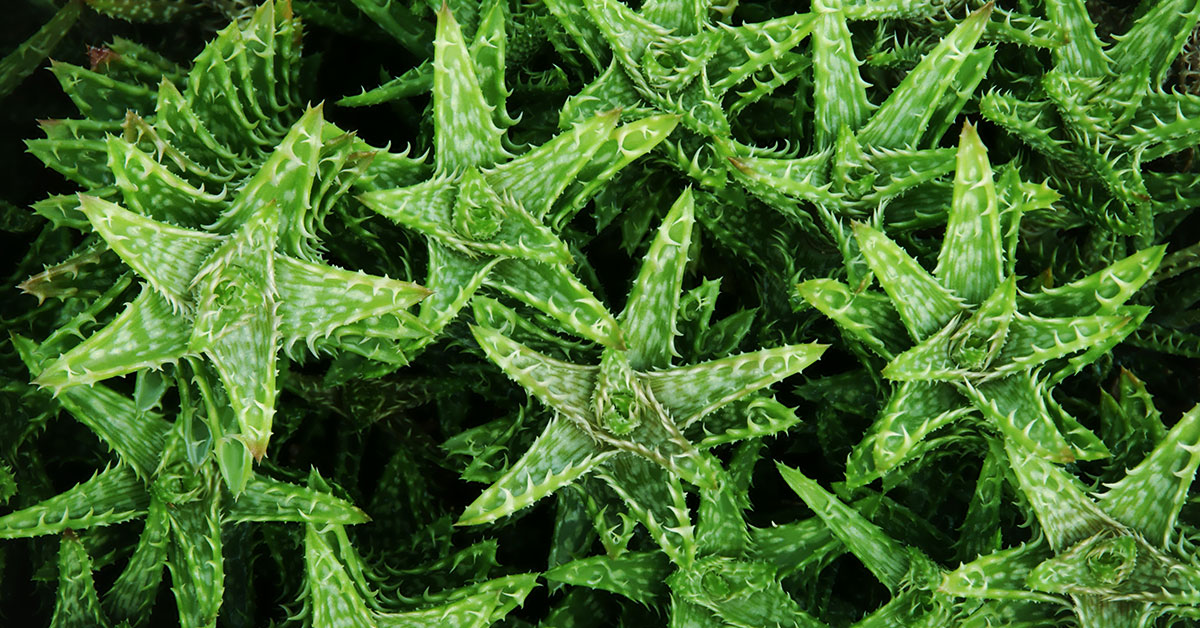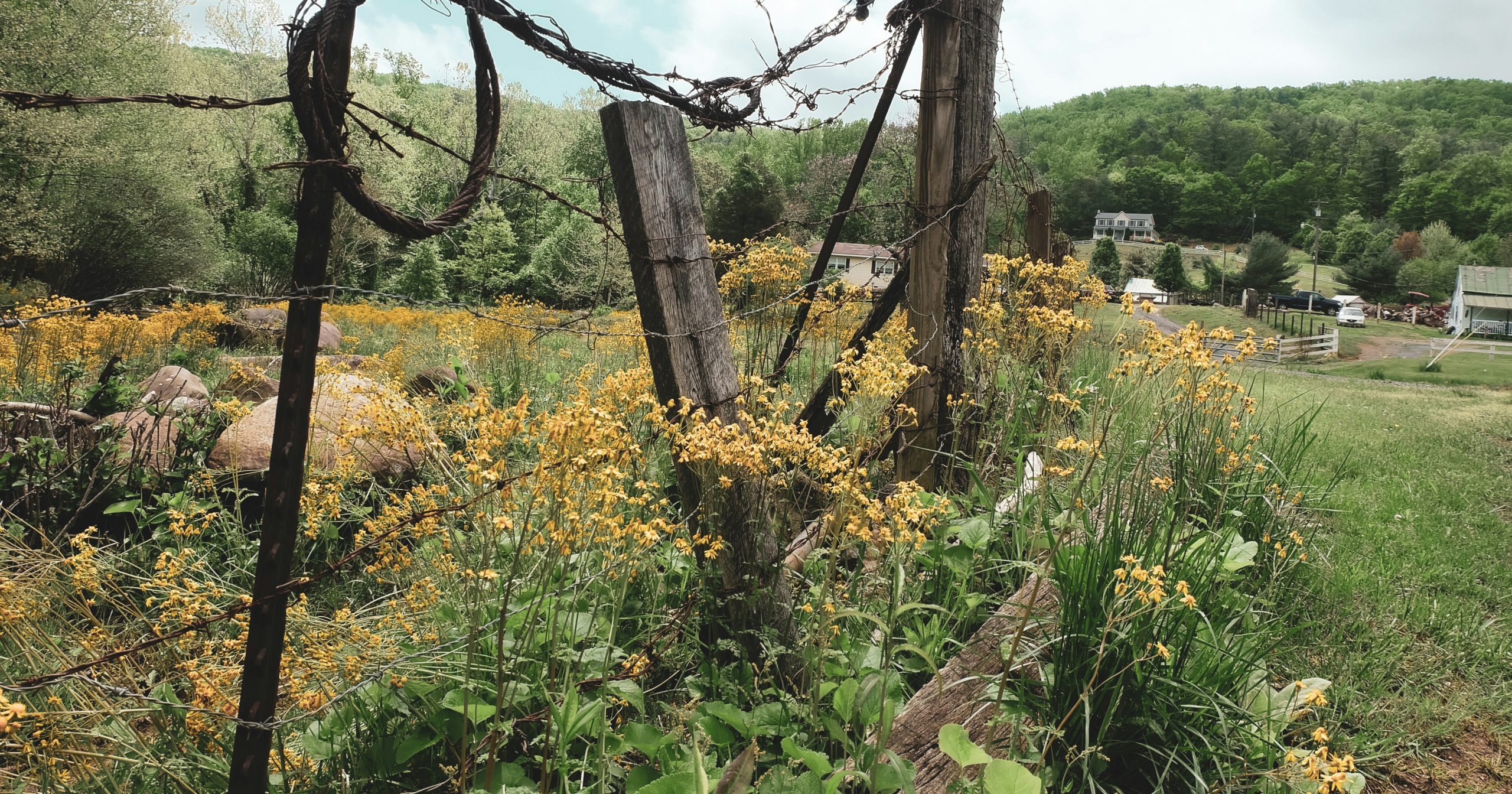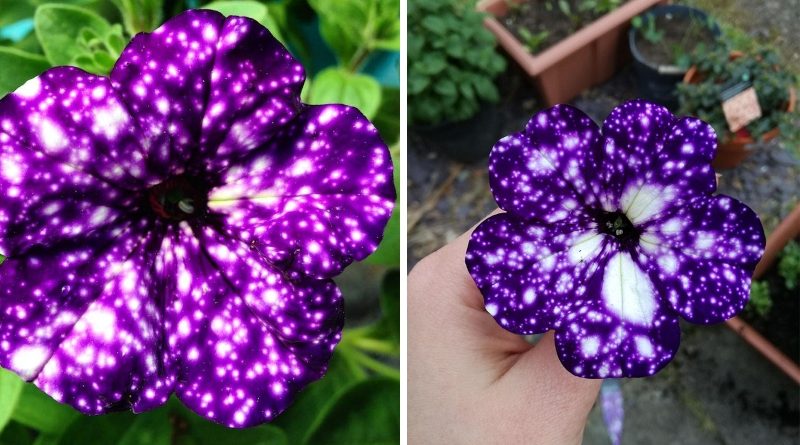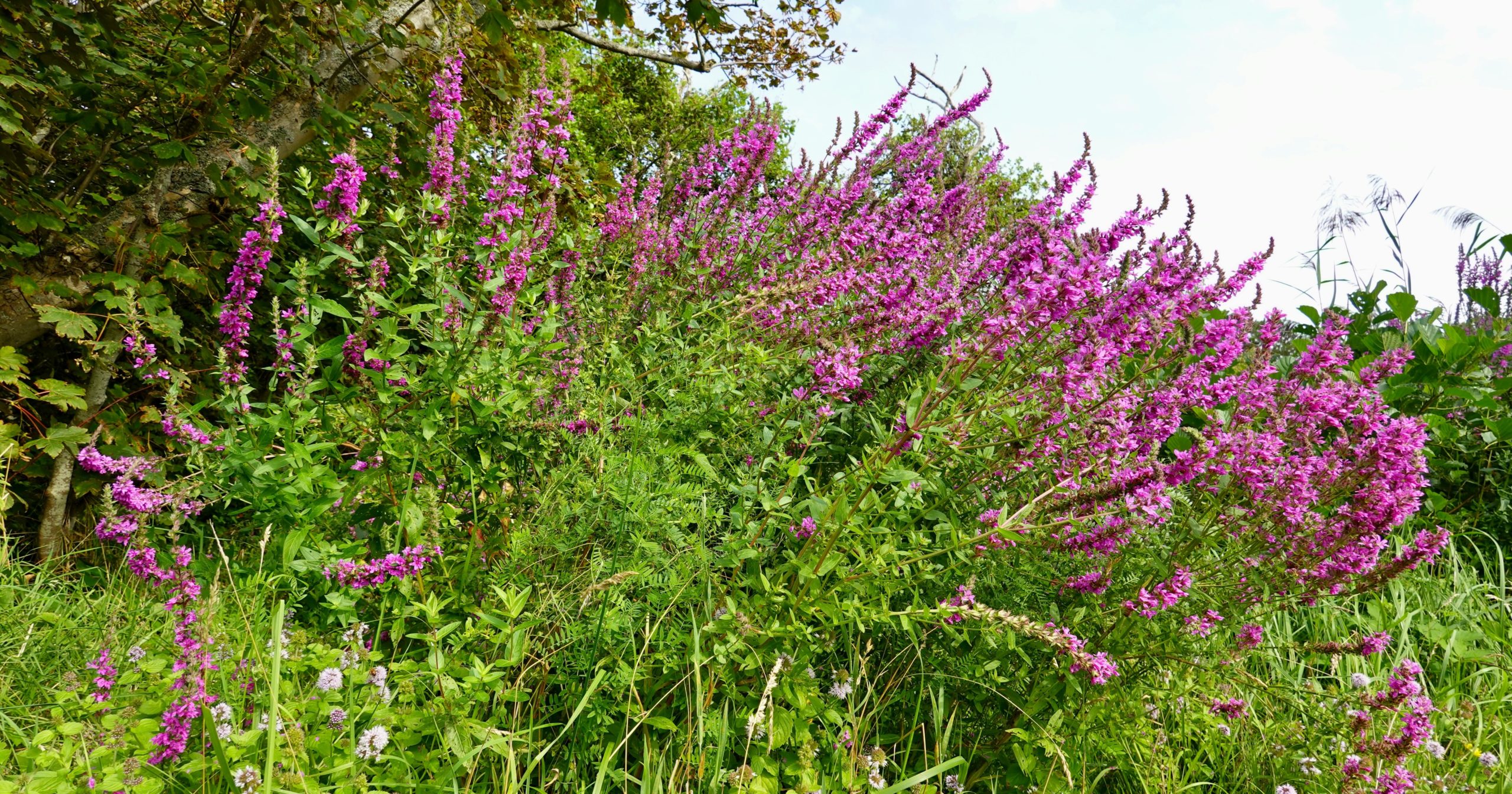Creating a charming English cottage garden is a dream for many gardeners. These gardens are known for their romantic, informal style, bursting with a variety of colorful flowers and lush greenery. The secret to achieving this enchanting look lies in choosing the right plants. Cottage gardens typically feature a mix of perennials, biennials, and annuals, all working together to create a delightful tapestry of blooms and textures.
In this article, I’ll introduce you to twelve beautiful flowers that are perfect for creating a classic English cottage garden. These plants are not only lovely but also bring a touch of timeless elegance to any garden space. Let’s dive into the world of cottage gardening and discover these charming flowers!
Delphinium
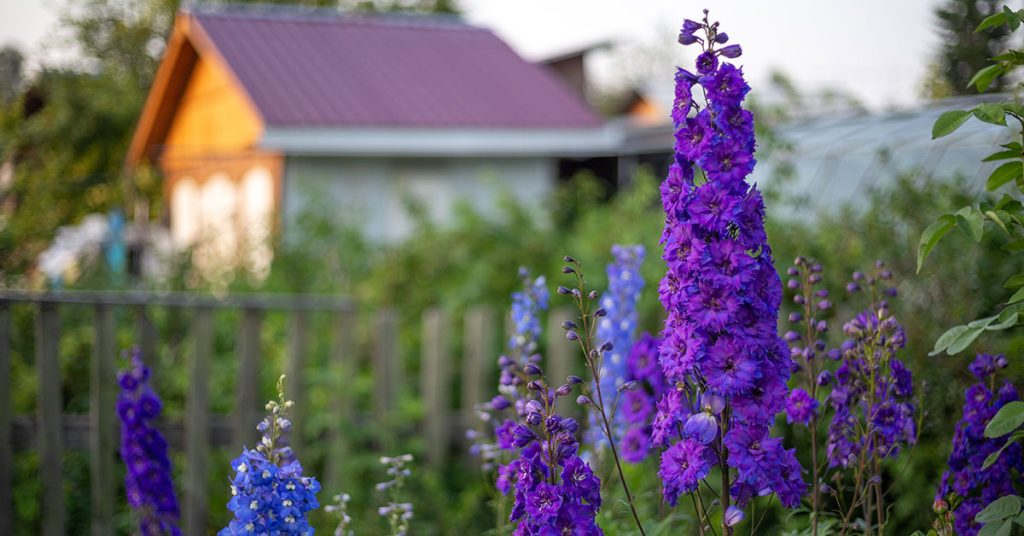
Delphiniums are quintessential cottage garden flowers, known for their tall spikes of vibrant blue, purple, pink, or white flowers. These striking perennials can reach heights of up to six feet, making them perfect for adding vertical interest to your garden. Delphiniums thrive in full sun and well-drained soil, and they benefit from staking to prevent their tall stems from toppling over in strong winds.
One of my favorite aspects of delphiniums is their ability to attract pollinators like bees and butterflies. These flowers add a touch of drama and elegance to any garden, and their stunning blooms make excellent cut flowers for arrangements. To keep your delphiniums healthy and blooming, be sure to provide regular watering and apply a balanced fertilizer during the growing season.
Hollyhock
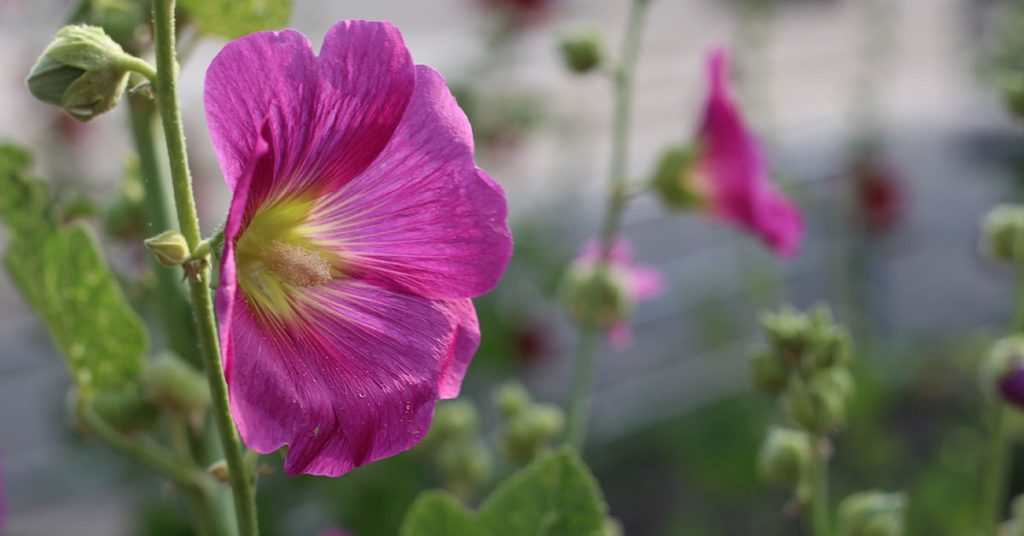
Hollyhocks are another classic choice for a cottage garden, known for their towering spikes of flowers that come in a range of colors, including red, pink, yellow, and white. These biennials are easy to grow and can reach heights of up to eight feet, making them ideal for planting along fences, walls, or the back of garden beds. Hollyhocks prefer full sun and well-drained soil and can tolerate a range of soil conditions.
I love hollyhocks for their old-fashioned charm and ability to create a vertical focal point in the garden. They are also great for attracting pollinators, including bees and hummingbirds. To ensure a continuous display of hollyhocks in your garden, allow some of the flowers to go to seed and self-sow. This will provide a natural succession of blooms year after year.
Lavender
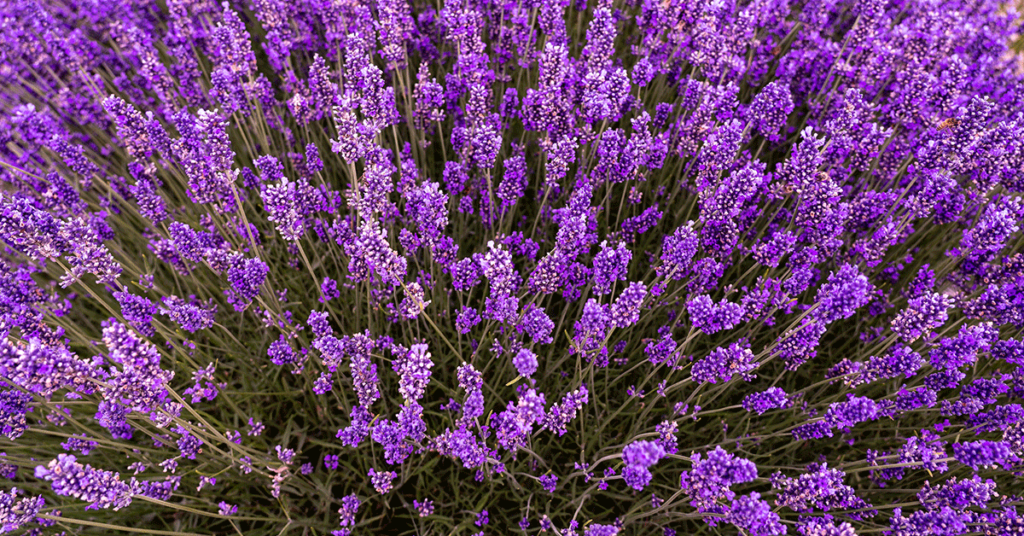
Lavender is a must-have for any cottage garden, with its fragrant, purple blooms and silvery-green foliage. This hardy perennial thrives in full sun and well-drained soil, making it a low-maintenance addition to your garden. Lavender is not only beautiful but also highly functional, as it can be used in cooking, crafts, and as a natural insect repellent.
One of the things I love most about lavender is its ability to attract pollinators like bees and butterflies while deterring pests like mosquitoes. Lavender’s compact growth habit makes it perfect for edging pathways or planting in containers. To keep your lavender plants looking their best, prune them annually after flowering to maintain their shape and encourage new growth.
Foxglove
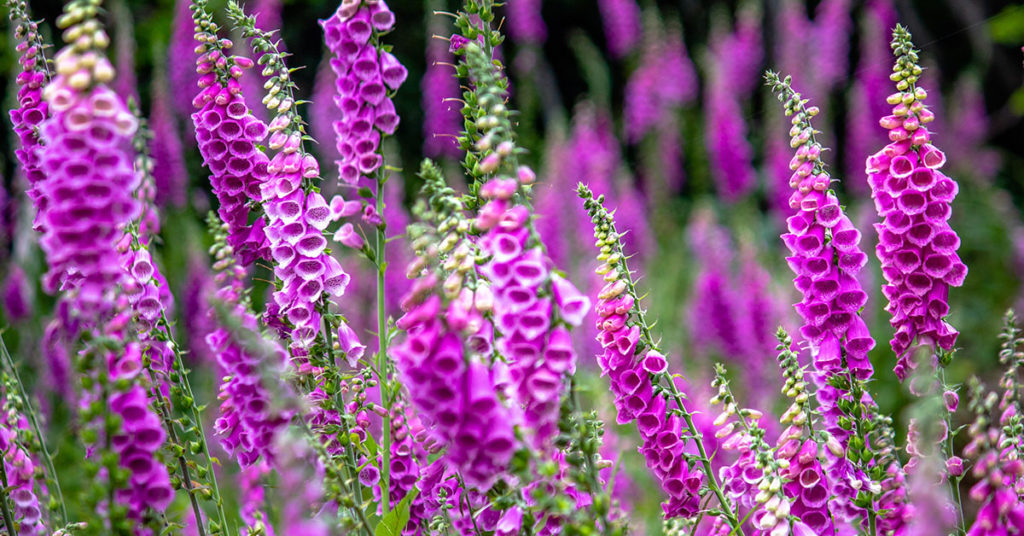
Foxgloves are enchanting biennials that bring a touch of wild beauty to a cottage garden. Their tall spires are adorned with tubular flowers in shades of pink, purple, white, and yellow. Foxgloves thrive in partial shade to full sun and prefer well-drained soil. These plants can grow up to five feet tall, making them perfect for adding height and structure to your garden.
I adore foxgloves for their dramatic appearance and their ability to attract bees and hummingbirds. However, it’s important to note that all parts of the foxglove plant are toxic if ingested, so they should be planted with caution if you have pets or young children. To ensure a continuous display of foxgloves, allow some plants to self-seed, and you’ll have new blooms popping up each year.
Peony
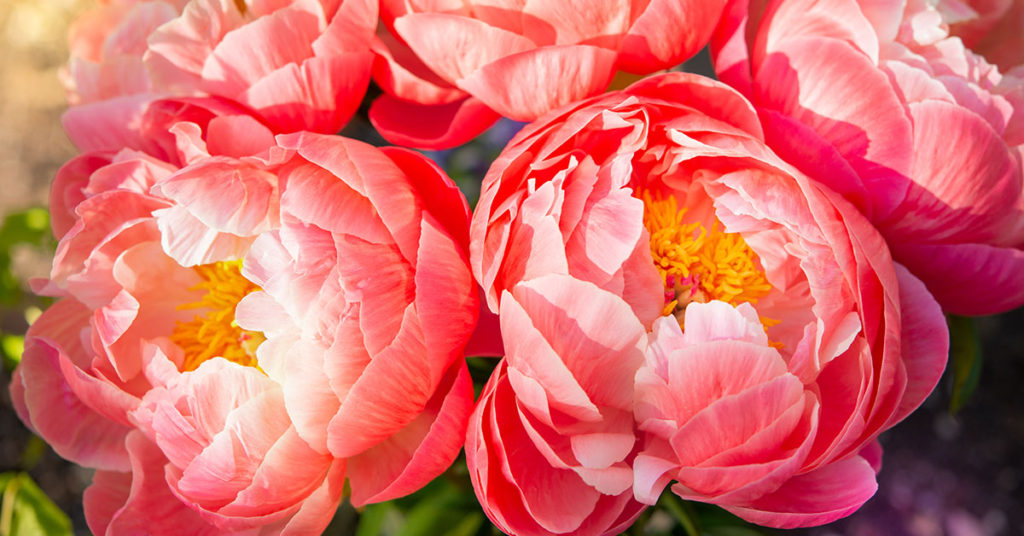
Peonies are beloved for their large, fragrant blooms and lush foliage. These perennials thrive in full sun and well-drained soil, and they can live for decades with proper care. Peonies come in a variety of colors, including pink, red, white, and yellow, and their blooms can be single, semi-double, or double, adding texture and interest to your garden.
One of my favorite things about peonies is their long-lasting blooms, which make excellent cut flowers. To keep your peonies healthy and blooming, provide them with regular watering, especially during dry spells, and support the heavy blooms with stakes or hoops. Peonies benefit from being planted in the fall, allowing their roots to establish before the growing season.
Sweet Pea
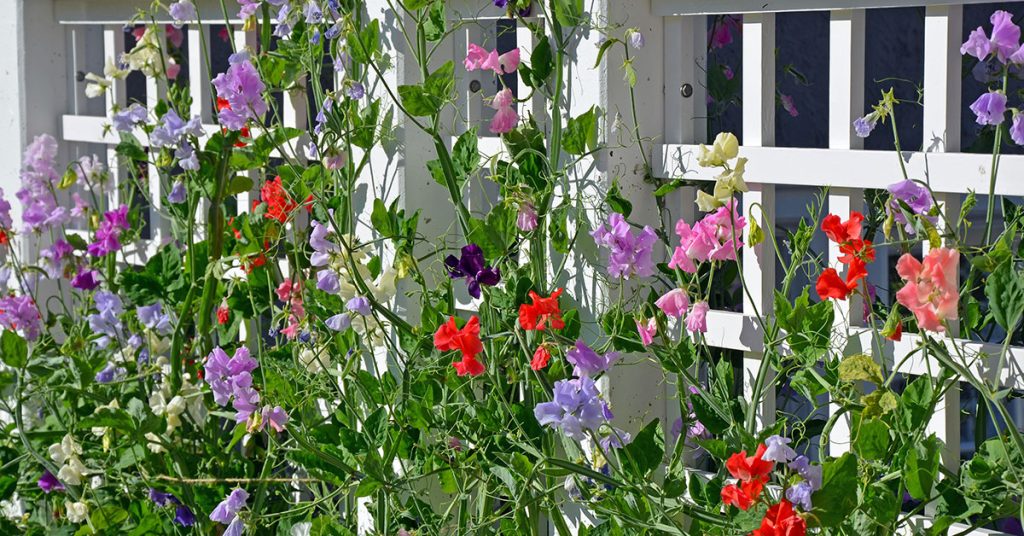
Sweet peas are charming annual climbers known for their delightful fragrance and colorful blooms. These flowers come in a wide range of colors, including pink, purple, red, and white. Sweet peas thrive in full sun and well-drained soil, and they can be grown on trellises, fences, or obelisks to add vertical interest to your garden.
I love sweet peas for their romantic, old-fashioned appeal and their ability to fill the garden with a sweet scent. To ensure a continuous display of blooms, deadhead spent flowers regularly and provide consistent moisture. Sweet peas are also excellent cut flowers, bringing their lovely fragrance indoors. For best results, sow sweet pea seeds in the fall or early spring.
Rose
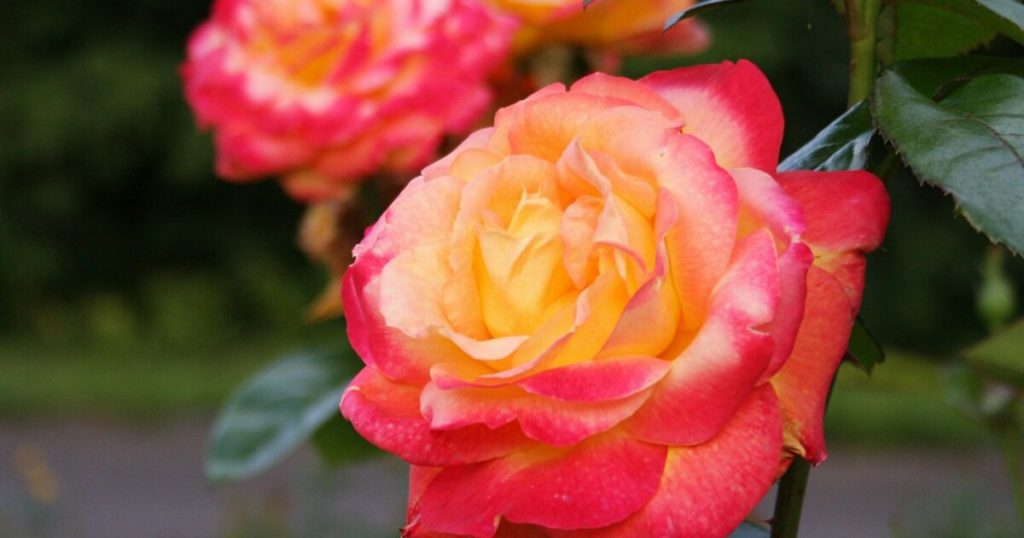
No cottage garden is complete without the timeless beauty of roses. These perennials come in a wide range of colors, shapes, and sizes, making them incredibly versatile. Roses thrive in full sun and well-drained soil, and they benefit from regular feeding and pruning to promote healthy growth and abundant blooms.
One of the reasons I love growing roses is their ability to add a touch of elegance and romance to the garden. Whether you choose climbing roses for a trellis, shrub roses for borders, or miniature roses for containers, there’s a rose to suit every garden style. To keep your roses healthy, provide them with good air circulation, and watch for common pests and diseases like aphids and black spot.
Poppy

Poppies are vibrant, easy-to-grow annuals or perennials that add a splash of color to any garden. These flowers come in a variety of colors, including red, orange, pink, and white, and they thrive in full sun and well-drained soil. Poppies are known for their delicate, papery petals and attractive seed pods, which add interest even after the blooms have faded.
I find poppies to be a delightful addition to my garden, as they are low-maintenance and attract pollinators like bees and butterflies. To encourage a continuous display of blooms, deadhead spent flowers regularly, and allow some plants to self-seed for future seasons. Poppies are also excellent for adding a touch of whimsy to garden beds and borders.
Dianthus
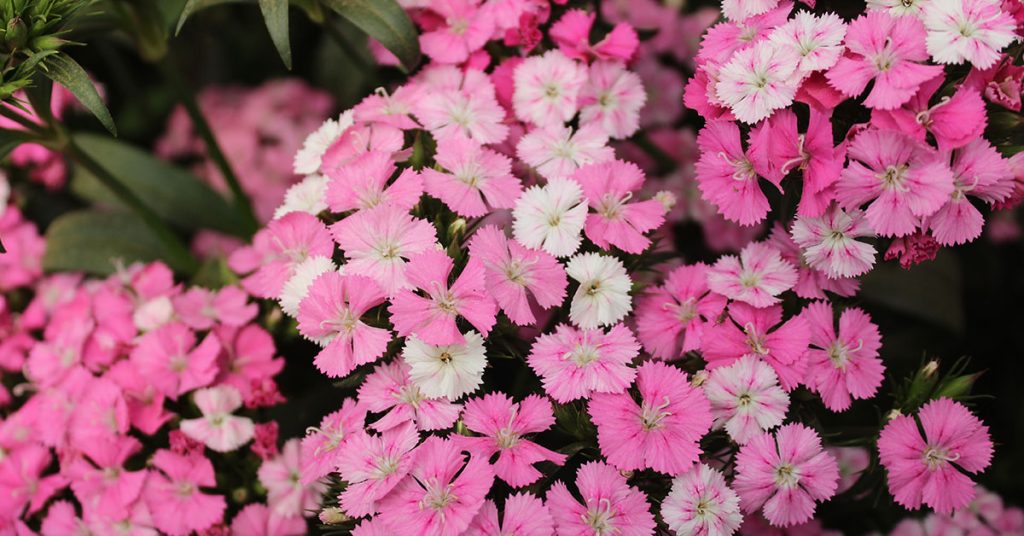
Dianthus, also known as pinks, are charming perennials or biennials known for their fringed petals and spicy fragrance. These flowers come in shades of pink, red, white, and purple and thrive in full sun and well-drained soil. Dianthus is a low-growing plant, making it perfect for edging garden beds or planting in rock gardens.
One of the things I love about dianthus is their long bloom period, providing color and fragrance from late spring through summer. These flowers are also great for attracting butterflies and other pollinators. To keep your dianthus looking its best, deadhead spent blooms and provide regular watering during dry spells. Dianthus is a versatile and delightful addition to any cottage garden.
Bleeding Heart
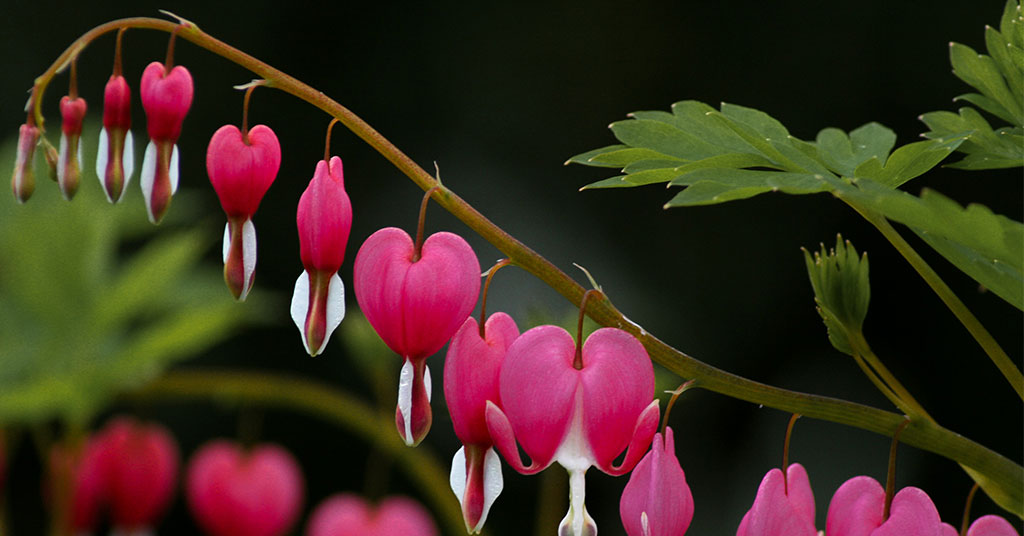
Bleeding Heart is a unique and enchanting perennial known for its heart-shaped flowers that dangle gracefully from arching stems. These flowers come in shades of pink and white and thrive in partial to full shade and well-drained soil. Bleeding Hearts can add a touch of elegance and whimsy to shady areas of your garden.
I adore Bleeding Hearts for their delicate beauty and their ability to brighten up darker garden corners. These plants are relatively low-maintenance and can naturalize in woodland settings. To keep your Bleeding Hearts healthy, provide them with consistent moisture and mulch to retain soil moisture and suppress weeds. Their unique blooms make them a standout addition to any cottage garden.
Shasta Daisy
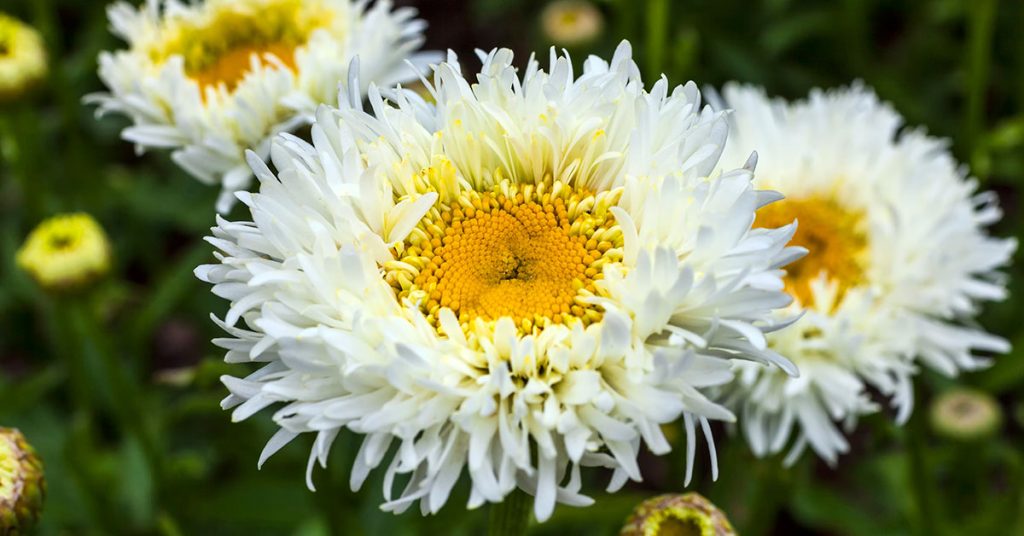
Shasta Daisies are cheerful perennials known for their classic white petals and yellow centers. These flowers thrive in full sun and well-drained soil, and they can add a bright, fresh look to your garden. Shasta Daisies are easy to grow and can reach heights of up to three feet, making them perfect for adding height and structure to garden beds and borders.
One of my favorite things about Shasta Daisies is their long bloom period, providing a burst of color from early summer to fall. They are also excellent cut flowers, adding a touch of brightness to indoor arrangements. To keep your Shasta Daisies looking their best, deadhead spent blooms and divide the plants every few years to prevent overcrowding. These daisies are a wonderful addition to any cottage garden.
Hydrangea
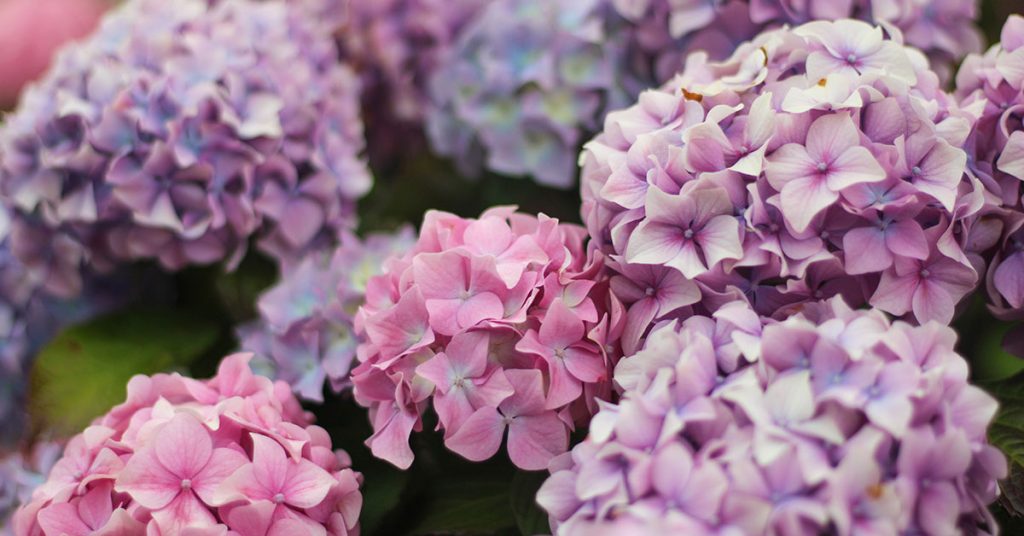
Hydrangeas are versatile shrubs known for their large, showy flower heads that come in a variety of colors, including blue, pink, white, and purple. These flowers thrive in partial shade to full sun and well-drained soil. Hydrangeas can add a dramatic and elegant touch to your garden, with some varieties changing color based on soil pH.
I love hydrangeas for their lush, full blooms and their ability to create a stunning focal point in the garden. They are relatively low-maintenance and can provide continuous interest throughout the growing season. To keep your hydrangeas healthy, provide them with regular watering and mulch to retain soil moisture. Hydrangeas are also excellent cut flowers, bringing their beauty indoors for enjoyment.
Creating a charming English cottage garden is a delightful way to enjoy a variety of beautiful flowers and lush greenery. By incorporating these twelve cottage garden flowers into your garden, you can achieve a timeless, romantic look that will enchant visitors and provide endless enjoyment.
